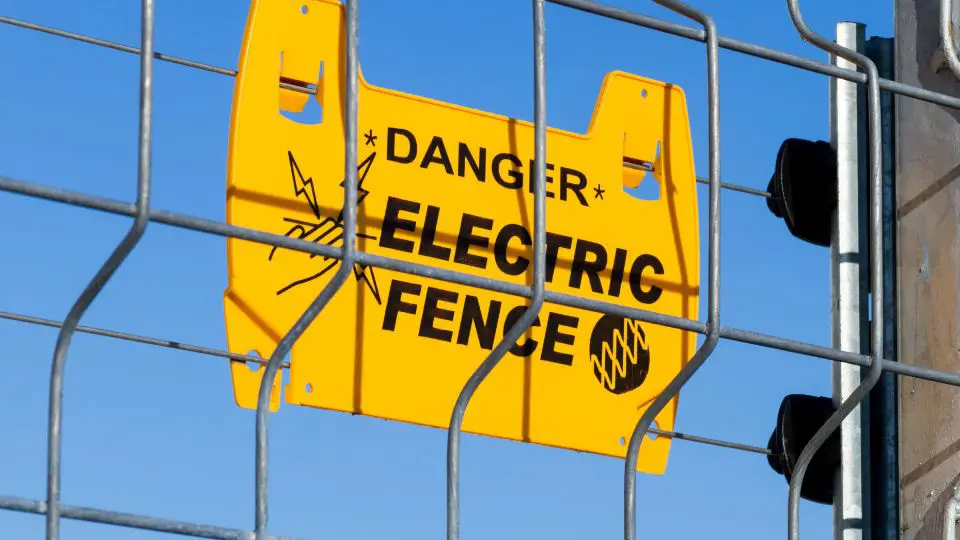Electric fences are the most effective type of fence to use for Fox control. Other options include barbed wire, mesh reinforcement, and wall spikes. Fences should be approximately 6 feet high to keep the Fox from climbing or jumping over it, with an apron at the bottom to prevent the fox from digging beneath it.
Foxes can be a nuisance in your yard, from destroying greenery to hunting flock and other pets.
Traditional fences made of thin mesh and wood are not successful at keeping foxes away. Materials such as thick meshing and wall spikes can be used to make fences more effective against predators.
In addition to a fence, installing a fox light will help scare off foxes from your property. The motion sensor light will turn on and flash when the fox approaches.
Other installations that will help are ultrasonic animal repellers, emitting high-frequency sound to annoy foxes. You could also install motion sensor sprinklers to spray approaching foxes. Putting a scarecrow nearby the fence may help scare off foxes, too.
Make sure your fence doesn’t have holes, as foxes can effortlessly get through small openings.
Table of Contents
Do fences keep foxes out?
No, fences generally don’t keep foxes out.
Foxes are known for being clever and will find a way through the fence by climbing, jumping, or digging.
Fences such as chain link or wooden fence will be easily climbed, dug under, or jumped over. Ornamental fences and tall vinyl fences will be more difficult to climb, but foxes will use other methods to get in.
The best type of fence to keep foxes out is an electric fence.

After being shocked once, the fox will not keep returning to try again. Electric fences are also beneficial because they can be installed yourself, are cheaper than traditional fences, and are effective against foxes.
Even though this fence style isn’t as visually appealing as maybe a wood fence is, an electric fence will save you trouble from many critters and serve as a helpful barrier to foxes.
While its possible a fox may jump over the electric fence, if you build it high enough, they won’t be able to.

How do you fox-proof a fence?
Adding a curving to the top of a fence with thick chicken wire or barbed wire will help keep foxes out.
This circular barrier at the top of the fence will make it harder for foxes to get in, because it blocks them from jumping or climbing.
The netting should be at least 0.09 cm thick, or else the fox will chew through it.
When you install the wire in a circular configuration, ensure the holes are less than 8 centimeters because if there are big holes, the fox will jump through them.
Since foxes can dig, you must also protect the bottom of the fence.
Creating a wire apron, also known as a mesh skirt, at the bottom of the fence will deter the fox from digging to get in.
Apron fencing is hex wire that can be attached to and buried under your fence but is also effective when just layering around the fence. Vegetation will start to grow and attach to the fence, eventually securing it to your yard.
If you have a net fence already, you could bury a portion of the netted fence to prevent digging. You can also create an underground barrier with steel mesh wire.
If you are trying to keep foxes out of your chicken coop, you can buy a chicken coop that has already been fox proofed. The top and bottom of these coops have fox-proof wire netting already installed.
You can install wall spikes at the top of your fence to prevent climbing. Homeowners can fit these weatherproof spikes along the top and sides of the fence, and when the fox or critter is poked, it will retreat.

How high should a fence be to keep foxes out?
A fence should be at least six feet tall to keep a fox out of your yard. Foxes can jump around three feet high but can climb about six feet high.
Even if your fence is taller than six feet, a fox will use its resources to get over the fence, such as climbing a nearby tree to get inside the perimeters of the fence or digging to go under the fence.
Because they are skilled climbers, using the right combination of fence materials is more effective fox prevention than building the fence higher and higher.
Can foxes climb chicken wire?
When a fox comes into contact with chicken wire, the fox probably won’t climb it but instead will use its teeth to rip through the wire to create a hole to get inside.
Like other wildlife, a fox can rip through the chicken wire with little effort. The actual function of chicken wire is to keep chickens in, not predators out.
Hardware cloth is more effective in protecting your flock. Install hardware cloth with a small or thin mesh for extra protection.

Do foxes dig under fences?
Foxes will dig under fences and burrow through any hole under or around a fence.
Adult foxes can squeeze through holes that are 8 to 10 centimeters wide. If they can fit their head through a hole, they can also fit their body through it.
Foxes love to dig and are excellent diggers. They will often dig up your flowerbeds just for fun, but if they smell food on the other side of your fence, they will relentlessly dig to get to it.
This is why installing mesh netting at the bottom of your fence is a good idea. Not only will it keep foxes from digging, but it will keep other critters like loose dogs and raccoons from digging into your yard, too.
It is recommended to contact a fence contractor or fence company to help you with construction or fox proofing questions that match your specific situation. They can help you determine which type of fence best suits your home and protection needs and will help with fence installation.

